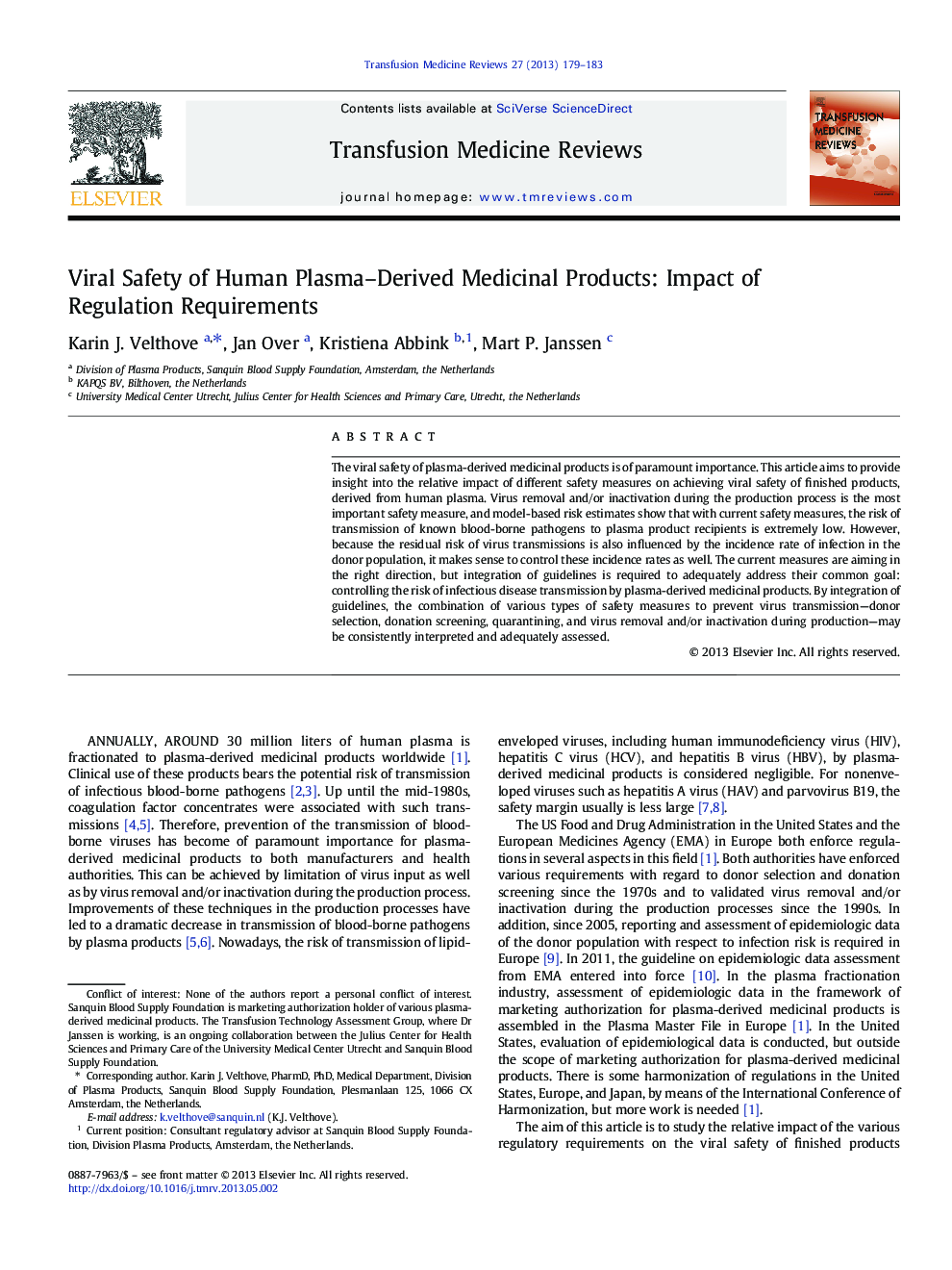| کد مقاله | کد نشریه | سال انتشار | مقاله انگلیسی | نسخه تمام متن |
|---|---|---|---|---|
| 6114362 | 1213622 | 2013 | 5 صفحه PDF | دانلود رایگان |
عنوان انگلیسی مقاله ISI
Viral Safety of Human Plasma-Derived Medicinal Products: Impact of Regulation Requirements
ترجمه فارسی عنوان
ایمنی ویروسی محصولات دارویی تولید شده توسط پلاسمای انسانی: تاثیر مقررات مورد نیاز
دانلود مقاله + سفارش ترجمه
دانلود مقاله ISI انگلیسی
رایگان برای ایرانیان
ترجمه چکیده
ایمنی ویروسی محصولات دارویی پلاسما از اهمیت بالایی برخوردار است. این مقاله با هدف بررسی تاثیر نسبی اقدامات مختلف ایمنی در دستیابی به ایمنی ویروسی محصولات نهایی تولید شده از پلاسمای انسان انجام شده است. حذف و یا غیرفعال کردن ویروس در طول فرآیند تولید، مهمترین اقدام ایمنی است و برآورد ریسک مبتنی بر مدل، نشان می دهد که با اقدامات ایمنی فعلی، خطر انتقال پاتوژن های شناخته شده خون به گیرندگان محصول پلاسما بسیار پایین است. با این حال، به دلیل اینکه خطر انتقال ویروس باقی مانده نیز تحت تاثیر میزان بروز عفونت در جمعیت اهدا کننده قرار می گیرد، کنترل این میزان بروز را نیز حس می کند. اقدامات فعلی در جهت درست هستند، اما ادغام دستورالعمل ها به طور مناسب برای رسیدن به اهداف مشترک آنها مورد نیاز است: کنترل خطر انتقال بیماری های عفونی توسط محصولات پلاستیکی مشتق شده. با تلفیق دستورالعمل ها، ترکیبی از انواع مختلف اقدامات ایمنی برای جلوگیری از انتخاب ویروس های انتقال ویروس، غربالگری اهدا، قرنطینه شدن و حذف ویروس و / یا غیرفعال شدن در طول تولید، می تواند به طور مداوم تفسیر و به اندازه کافی ارزیابی شود.
موضوعات مرتبط
علوم پزشکی و سلامت
پزشکی و دندانپزشکی
هماتولوژی
چکیده انگلیسی
The viral safety of plasma-derived medicinal products is of paramount importance. This article aims to provide insight into the relative impact of different safety measures on achieving viral safety of finished products, derived from human plasma. Virus removal and/or inactivation during the production process is the most important safety measure, and model-based risk estimates show that with current safety measures, the risk of transmission of known blood-borne pathogens to plasma product recipients is extremely low. However, because the residual risk of virus transmissions is also influenced by the incidence rate of infection in the donor population, it makes sense to control these incidence rates as well. The current measures are aiming in the right direction, but integration of guidelines is required to adequately address their common goal: controlling the risk of infectious disease transmission by plasma-derived medicinal products. By integration of guidelines, the combination of various types of safety measures to prevent virus transmission-donor selection, donation screening, quarantining, and virus removal and/or inactivation during production-may be consistently interpreted and adequately assessed.
ناشر
Database: Elsevier - ScienceDirect (ساینس دایرکت)
Journal: Transfusion Medicine Reviews - Volume 27, Issue 3, July 2013, Pages 179-183
Journal: Transfusion Medicine Reviews - Volume 27, Issue 3, July 2013, Pages 179-183
نویسندگان
Karin J. Velthove, Jan Over, Kristiena Abbink, Mart P. Janssen,
